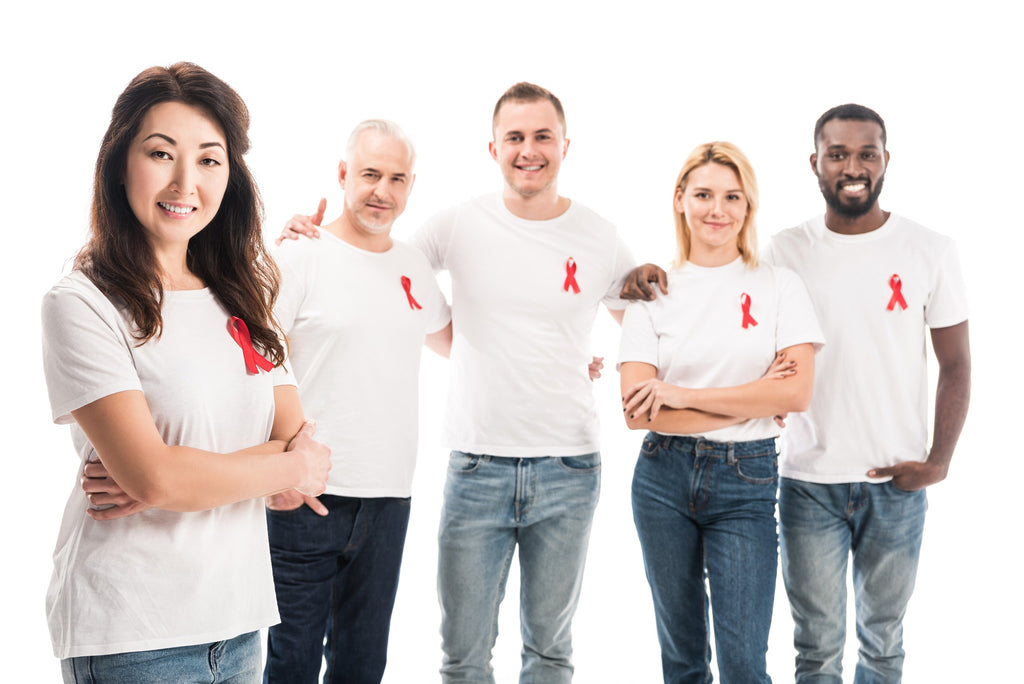HIV today is a well-managed disease when proper medical care is sought and administered. Working with HIV positive clients should be no different than working with clients who are not HIV positive. However, practitioners should learn the various stages of HIV infection to be able to better understand and serve a client with HIV.
According to: the CDC, WebMD, US Health & Human Services, Healthline, Wikipedia, etc., There are 3 basic stages of HIV:
- Infection (also known as acute stage)
- Latency (also known as chronic stage)
- AIDS
Stage 1: Acute HIV infection
Within 2 to 4 weeks after infection with HIV: People may experience a flu-like illness, which may last for a few weeks. This is the body’s natural response to infection.
People with acute stage one HIV infection are often unaware that they’re infected because they may not feel sick right away or at all. When people have acute HIV infection, they have a large amount of virus in their blood and are very contagious. If you think you have been exposed to HIV and have flu-like symptoms, seek medical care and ask for an HIV test.
To know whether someone has been infected with HIV, either a fourth-generation antibody/antigen test or a nucleic acid (NAT) test is necessary.
Medical Considerations for Stage 1: Acute HIV infection
- Client may not know they are infected
- Client may exhibit signs of a cold or flu-like illness
- Massage therapist, bodyworkers, spa and salon professionals and other service providers should not work on ANY client who exhibits signs of fever, chills or other unknown or contraindicated illness. Any client exhibiting such illness must be referred to physician for care and should not return for service until their illness subsides or they are cleared by a medical doctor.
The HIV Stage 1 flu-like symptoms might include:
- fever
- chills
- rash
- night sweats
- muscle aches
- sore throat
- fatigue
- swollen lymph nodes
- mouth ulcers
These flu-like illnesses are normal. The flu-like illnesses are the body’s response to HIV infection. During HIV stage one, these flu-like illnesses are not contagious. However, HIV stage one is considered highly infectious given the extremely high viral counts in the person’s blood.
When a practitioner operates with normal standard service precautions, there is no chance of HIV transmission, even when a stage one HIV infected individual appears sickly and infectious.
Standard service precautions include making sure that your skin is whole and fully intact, and to wear gloves or finger cots over any areas of skin cuts, tears or abrasions. Practitioners should avoid any possible blood exposure and treat all blood exposure like it is HIV positive.
The visible illness of flu like symptoms of stage one HIV is the individual’s own immune response to the virus in their body. HIV transmission is not similar to cold or flu transmission despite a HIV infected stage one individual demonstrating cold or flu like symptoms. Colds and flus are commonly spread through respiratory aerosol and moisture droplets. HIV is not spread through respiratory aerosol or droplets, so working on a stage one HIV infected individual poses no risk to the practitioner, especially when standard precautions are observed.

Stage 2: Clinical Latency, HIV Inactivity or Dormancy
This period is sometimes called:
- Asymptomatic HIV Infection
- Chronic HIV Infection
For people who aren’t taking medicine to treat HIV, this period can last a decade or longer, but some may progress through this stage faster. People who are taking medicine to treat HIV (antiretroviral drug therapy also known as ART) the right way, every day, may be in this stage for life.
It is important to remember that people can still transmit HIV to others during this or any stage. People who are on antiretroviral drug therapy and stay virally suppressed (some having exceptionally low or undetectable levels of virus), and they are much less likely to transmit HIV than those who are not virally suppressed, although transmission is still possible.
Medical Considerations for Stage 2: Clinical Latency
Latency could last for years or a “regular” full lifetime! Stage 2 clients regularly exhibit as “healthy” individuals. It is recommended to proceed with your regular service with Stage 2 clients, unless directed otherwise by a:
- Physician
- Your client
- A more immediate medical condition or illness
At the end of Stage 2, viral loads start to go up and the CD4 cell count begins to go down. This process can move a person from Stage 2 HIV into Stage 3 AIDS.

Stage 3: AIDS - Acquired Immunodeficiency Syndrome
AIDS is the most severe stage of HIV infection, which is also known as Stage 3. People with AIDS have badly damaged immune systems and get an increasing number of severe illnesses, called opportunistic illnesses
Medical Considerations for Stage 3: AIDS
A client’s immune system generally functions poorly by Stage 3. At this point, they can be extremely susceptible to illness.
Extreme disinfection and sanitation methods must be practiced PRIOR to the client’s arrival. This includes disinfecting door handles and surface areas that may be touched by the therapist or client. Always wear gloves to protect your own hands and skin integrity while using chemicals with cleaning!
It is recommended to avoid prolonged services that use extreme heat or cold temperatures in Stage 3 HIV. Double check skin integrity prior to waxing or tweezing. It may be advisable to obtain the client’s physician’s recommendations during this advanced stage for medical spa services such as laser hair removal, etc. Use your best judgement and if you’re not sure, speak with your client and suggest getting a physician involved to ensure the health and safety of your client.
Physicians are often unaware of what salon and spa services may entail, so be thorough in telling them what’s involved in providing the service (i.e. compression or tugging of the skin, hair or scalp, prolonged heat application, etc.). If you obtain permission to speak with the client’s physician, it’s also a good idea to ask about any additional opportunistic illnesses that the client may have and advice on how to appropriately “cater” to any illness.
Be prepared to accommodate a Stage 3 client. Most clients in any stage will not need much accommodation; however, stage 3 clients may tire easily, have fatigue and other health issues that will require patience and understanding.
For additional training, please join us at: https://ceinstitute.com/

#massagetherapist #massage #bodyworker #bodywork #spa #LMT #lmtlife #safety #hiv #hivcare #aidscare #healthcare #hivawareness

























